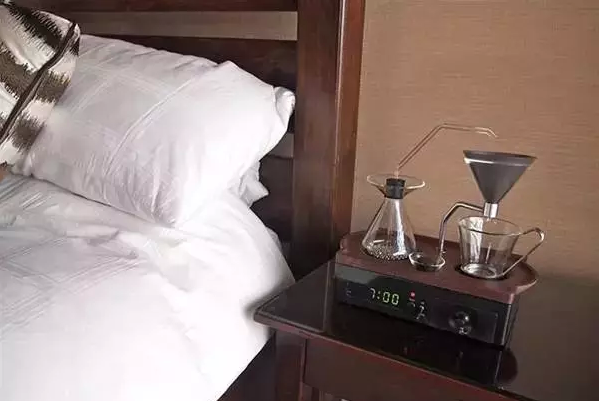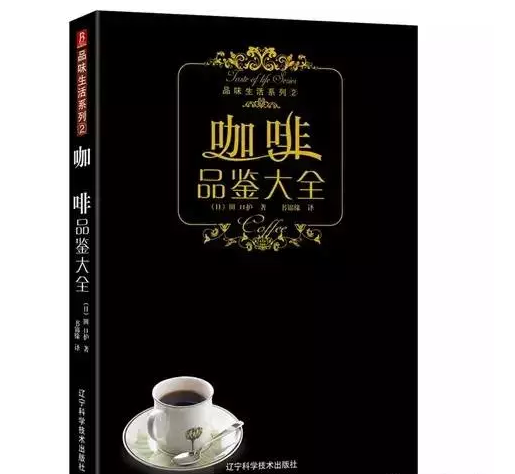Stand in line for coffee? Do you really understand, or is it just for pretending?
Coffee has changed from the strange taste of foreign things more than a decade ago to a cup of leisure drink in the hands of fashionable white-collar workers today. And there are not a few people who are addicted to coffee and are willing to spend a lot of time in a long line at Starbucks, but dare you say you really know anything about coffee? Or do those cups of drinks that look like petty bourgeoisie make you feel superior? Self-willed, through the following six strides to the coffee shop!
1. Shallow baking (Light Roast) vs deep baking (Dark Roast)
According to the American classification, the roasting of coffee beans can be divided into eight stages from shallow to deep. The taste of coffee mainly depends on the baking degree. Generally, the deeper the roasting degree, the stronger the bitter taste, and the lower the roasting degree, the higher the sour taste. Baking depth mainly depends on the characteristics of raw beans, personal preferences and other factors.
Arabica (Arabica) vs Robusta (Robusta)
In terms of varieties, coffee trees are mainly divided into two kinds: one is Arabica, the other is Robusta. Arabica coffee is mainly produced in tropical South America, such as Central Brazil, with smaller bean shape, lower caffeine content and higher price.
Robusta is produced in Madagascar in west-central and eastern Africa, as well as Indonesia in Asia, with large beans, about twice as much caffeine as Arabica, and low prices.
About 75% of the world's coffee is Arabica, but only 10% is coffee that can be used in upscale coffee shops.
Espresso (Espresso) vs dripping Coffee (Drip)
Espresso is made by letting hot water flow through a handful of fine coffee powder under high pressure, with high caffeine concentration and coffee fat. The dripping coffee is to let the boiling water through the coarse ground coffee powder, the caffeine concentration is low, basically does not contain coffee fat, is more suitable for drinking in large quantities.
Caffee Latte (vs) cappuccino (Cappuccino)
Lattes and cappuccinos both belong to milk coffee. The main difference lies in the ratio of espresso, milk and milk bubbles.
For cappuccino, the amount of espresso, hot milk and foam should be the same (1:1:1), while hot latte milk is more (1:2:1). The latte is more compact and delicate, while the cappuccino is slightly dry.
5. Caffee Latte vs Ole Coffee (Cafe au Lait)
Simply put, lattes are made from Espresso and steamed milk, while Ole coffee is made from dripping coffee with steamed milk.
Espresso or Expresso
If the above 5 points are not clear for the time being, remember to pronounce them correctly first! Espresso is Italian, especially espresso. It means on the spur of the moment and "for you" (cooked right away for you). In a coffee shop, if you ask for "Espresso", it means you are in a hurry, while Expresso can only make the clerk laugh.
Part of the material comes from the Internet, the country of coffee revised editor, reprint please indicate the source!
Important Notice :
前街咖啡 FrontStreet Coffee has moved to new addredd:
FrontStreet Coffee Address: 315,Donghua East Road,GuangZhou
Tel:020 38364473
- Prev

The alarm clock that coffee people want most-- Barisieur
British designer Joshua Renouf has made the dream of a coffee enthusiast come true by combining an alarm clock and a coffee maker to design the alarm clock coffee machine Barisieur. In a fast-paced metropolis, five minutes in the morning is very important, so designer Joshua Renouf has developed a super lovely coffee alarm clock, Barisieur, when you are still sleeping.
- Next

Coffee people must have 10 coffee books, how many do you have?
In the world of coffee, books are also essential. Whether coffee lovers, enthusiasts, beginners, or baristas, coffee shop owners, coffee industry workers, want to have a more comprehensive and in-depth understanding of coffee, a few good books are essential. Here is a list of some of the common coffee books in China that are worth recommending, hoping to be helpful to the majority of coffee lovers. 1 、
Related
- What effect does Italian American coffee with filter paper have? Will coffee taste better if it is put on filter paper at the bottom of the powder bowl?
- What is the color difference in coffee beans? What are the characteristics of honey processed coffee beans? Why are the anaerobically treated coffee beans uneven in color?
- How does novice Xiaobai quickly get started and make coffee? Newbies learn to make coffee by hand and share the specific steps and process process!
- Costa tea has a shelf life of 100 years?! Expert: Unable to verify
- It's a huge uproar! American milk addition was rejected by Manner employees?!
- Mocha pot coffee bean recommendations| How fine and how much powder should be used for grinding? What parameter ratios do I need to use to make milk with Mocha pot coffee?
- What are the characteristics of the world's top ten coffee beans treated with Costa Rica honey? How to make black honey kadura from Tarazhu Pilon Processing Plant taste good?
- How to make deep-roasted coffee? What grinding water temperature does authentic Jamaica Blue Mountain No. 1 coffee use to brew it well?
- Selected high-grade rose summer coffee flavor tasting guide Why Panama rose summer has the aroma of flowers and fruits
- What equipment does a novice Xiaobai need to buy to learn to make coffee? Filter cup electronic scale bean grinder manual flushing pot purchase guide

